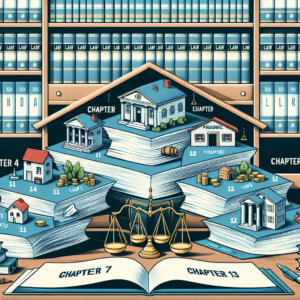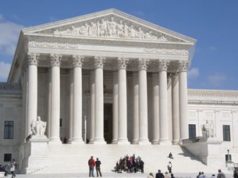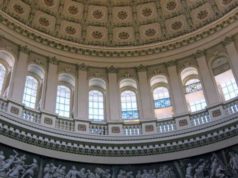
In today’s fast-paced financial landscape, many individuals find themselves grappling with overwhelming debt. Whether due to unexpected medical expenses, job loss, or poor financial planning, the burden of debt can be suffocating. However, there is hope. Various debt relief options are available to help individuals regain control of their financial futures. This article will guide you through the essentials of debt relief, exploring different options, the role of credit counseling, the implications of debt settlement and bankruptcy, and how to create a sustainable financial plan post-debt relief.
Understanding the Basics of Debt Relief: What You Need to Know Before You Begin
Before embarking on a debt relief journey, it is crucial to understand the fundamentals of what debt relief entails. Debt relief refers to the process of reducing or eliminating debt through various methods, which can alleviate financial pressure and restore peace of mind. It is essential to assess your financial situation thoroughly, including the types and amounts of debt you owe, your income, and your monthly expenses. Understanding your credit score and how it may be affected by different debt relief options is also vital. This foundational knowledge will empower you to make informed decisions as you explore potential solutions to your debt challenges.
Exploring Different Types of Debt Relief Options: Which One is Right for You?
There are several debt relief options available, each with its unique advantages and disadvantages. Common methods include debt consolidation, debt management plans, debt settlement, and bankruptcy. Debt consolidation involves combining multiple debts into a single loan with a lower interest rate, making payments more manageable. Debt management plans, often facilitated by credit counseling agencies, allow individuals to repay their debts over time while negotiating lower interest rates with creditors. Debt settlement involves negotiating with creditors to pay a reduced amount, while bankruptcy provides legal protection and a fresh start for those unable to repay their debts. Evaluating your financial situation and goals will help determine which option aligns best with your needs.
The Role of Credit Counseling in Your Debt Relief Journey: A Comprehensive Overview
Credit counseling plays a pivotal role in many individuals’ debt relief journeys. Certified credit counselors provide personalized guidance and support to help clients understand their financial situation, develop budgets, and explore debt relief options. They can assist in creating a debt management plan, negotiating with creditors, and providing education on financial literacy. Many credit counseling agencies offer free or low-cost services, making them an accessible resource for those seeking help. Engaging with a credit counselor can provide clarity and direction, empowering individuals to take proactive steps toward financial stability.
Evaluating Debt Settlement Services: Pros, Cons, and Key Considerations
Debt settlement services can be an attractive option for individuals seeking to reduce their debt burden. These services negotiate with creditors on behalf of the debtor to settle debts for less than the full amount owed. While this can lead to significant savings, it is essential to weigh the pros and cons. On the positive side, successful settlements can provide immediate relief and reduce the total debt load. However, debt settlement can negatively impact credit scores, and there may be fees associated with the service. Additionally, not all creditors may be willing to negotiate, and there is no guarantee of success. Individuals considering debt settlement should conduct thorough research and consult with a financial advisor to ensure they understand the implications.
Bankruptcy as a Debt Relief Option: Navigating the Legal Landscape Effectively
Bankruptcy is often viewed as a last resort for individuals facing insurmountable debt. It is a legal process that allows individuals to discharge certain debts or create a repayment plan under the protection of the court. There are two primary types of personal bankruptcy: Chapter 7 and Chapter 13. Chapter 7 bankruptcy involves liquidating non-exempt assets to pay creditors, while Chapter 13 allows individuals to retain their assets and repay debts over time through a court-approved plan. While bankruptcy can provide a fresh start, it comes with long-term consequences, including a significant impact on credit scores and the potential loss of assets. Navigating the bankruptcy process requires careful consideration and often the assistance of a qualified attorney to ensure compliance with legal requirements.
Creating a Sustainable Financial Plan Post-Debt Relief: Steps Towards Lasting Freedom
Achieving debt relief is a significant milestone, but it is only the beginning of the journey toward financial freedom. To ensure lasting success, individuals must create a sustainable financial plan that addresses their long-term financial goals. This plan should include a comprehensive budget that accounts for all income and expenses, as well as savings for emergencies and future investments. Establishing an emergency fund is crucial to prevent falling back into debt due to unforeseen circumstances. Additionally, ongoing financial education can empower individuals to make informed decisions and avoid pitfalls that may lead to future debt. By committing to a disciplined financial strategy, individuals can build a secure financial future free from the constraints of debt.
In conclusion, navigating the path to financial freedom through debt relief requires careful consideration and informed decision-making. By understanding the basics of debt relief, exploring various options, and seeking guidance from credit counseling, individuals can take significant steps toward regaining control of their finances. While options like debt settlement and bankruptcy offer potential solutions, they come with their own set of challenges that must be carefully evaluated. Ultimately, creating a sustainable financial plan post-debt relief is essential for ensuring long-term success and stability. With the right knowledge and resources, a brighter financial future awaits those willing to take the necessary steps.



















